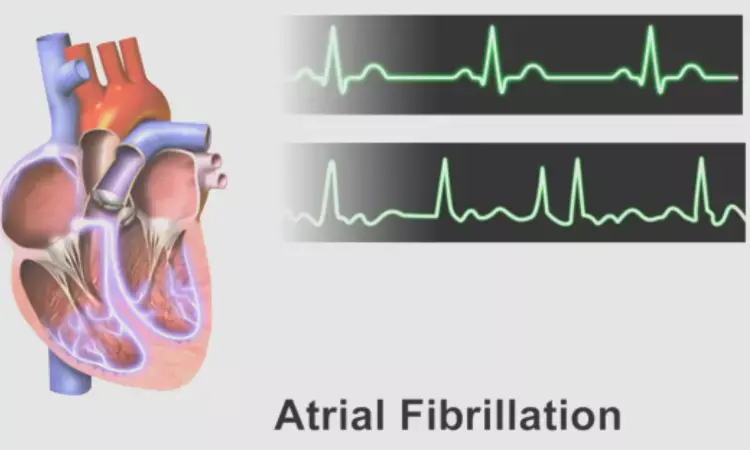- Home
- Medical news & Guidelines
- Anesthesiology
- Cardiology and CTVS
- Critical Care
- Dentistry
- Dermatology
- Diabetes and Endocrinology
- ENT
- Gastroenterology
- Medicine
- Nephrology
- Neurology
- Obstretics-Gynaecology
- Oncology
- Ophthalmology
- Orthopaedics
- Pediatrics-Neonatology
- Psychiatry
- Pulmonology
- Radiology
- Surgery
- Urology
- Laboratory Medicine
- Diet
- Nursing
- Paramedical
- Physiotherapy
- Health news
- Fact Check
- Bone Health Fact Check
- Brain Health Fact Check
- Cancer Related Fact Check
- Child Care Fact Check
- Dental and oral health fact check
- Diabetes and metabolic health fact check
- Diet and Nutrition Fact Check
- Eye and ENT Care Fact Check
- Fitness fact check
- Gut health fact check
- Heart health fact check
- Kidney health fact check
- Medical education fact check
- Men's health fact check
- Respiratory fact check
- Skin and hair care fact check
- Vaccine and Immunization fact check
- Women's health fact check
- AYUSH
- State News
- Andaman and Nicobar Islands
- Andhra Pradesh
- Arunachal Pradesh
- Assam
- Bihar
- Chandigarh
- Chattisgarh
- Dadra and Nagar Haveli
- Daman and Diu
- Delhi
- Goa
- Gujarat
- Haryana
- Himachal Pradesh
- Jammu & Kashmir
- Jharkhand
- Karnataka
- Kerala
- Ladakh
- Lakshadweep
- Madhya Pradesh
- Maharashtra
- Manipur
- Meghalaya
- Mizoram
- Nagaland
- Odisha
- Puducherry
- Punjab
- Rajasthan
- Sikkim
- Tamil Nadu
- Telangana
- Tripura
- Uttar Pradesh
- Uttrakhand
- West Bengal
- Medical Education
- Industry
Younger AF patients may benefit more from MRI-guided ablation treatments

Tulane University researchers have found in one of the largest global studies of treatments for heart arrhythmias DECAAF II trial, that personalized, MRI-guided ablation treatments to correct irregular heart rhythms may benefit Younger atrial fibrillation (AFib) patients.
The findings of the study have been presented at the European Society of Cardiology (ESC) Congress 2023 in Amsterdam this week.
There’s been debate among physicians on whether going beyond traditional ablation treatments provides a benefit to patients. In 2021, the DECAAF II trial found that simple treatments are as effective as more intensive approaches. The study initially found that using advanced image-guided technology to target additional diseased areas causing arrhythmias, beyond the usual treatment zones, did not yield superior results compared to simpler methods.
However, when Tulane researchers looked more closely at the study results using AI-modeling analysis they found screening criteria that could help doctors select patients who would be most likely to benefit from the newer treatments. They found that patients younger than 58 years old had the best results.
“This shows that the younger population with AFib should be treated very quickly and not wait to get ablation treatment,” said Dr. Nassir Marrouche, director of the Tulane Heart and Vascular Institute and The Research Innovation for Arrhythmia Discoveries (TRIAD) at Tulane University School of Medicine. “The earlier we treat an arrhythmia in younger populations, the better they do. In general, people tend to wait until they get older to seek treatment. Our finding is that there are more issues when they are starting therapy then and the outcomes are not as good.”
For the study, researchers followed 843 AFib patients undergoing ablation treatment at 44 hospitals in 10 countries, including the United States, Germany, France and Australia. All the patients received magnetic resonance imaging (MRI) scans to quantify the amount of diseased tissue within their hearts. (Those with a higher percentage of diseased tissue are at higher risk for arrhythmia relapse, according to findings from the original DECAAF trial.)
Half of the patients received standard care — pulmonary vein isolation (PVI) treatment where doctors ablate areas in the left upper chamber of the heart where the four lung veins meet.
For the other group, doctors used the MRI scans to create a detailed 3D map of all diseased areas along the left atrium of the heart. They performed conventional PVI treatment and then used the digital map to ablate diseased tissue more aggressively and precisely outside of conventional treatment areas.
All of the study patients received smartphone EKG devices to monitor their heart rhythms daily after treatment, and researchers followed up with them at 3-, 6- and 12-month intervals.
The study looked at how long it took each group to experience an arrhythmia recurrence after 90 days from treatment. The new analysis showed that patients under 58 years old who underwent fibrosis-guided ablation in addition to PVI experienced significantly lower arrhythmia recurrence rates compared to those who received PVI-only.
“The treatment improved outcomes for these patients by a staggering 50 percent,” Marrouche said.
Furthermore, the study found that AFib burden was significantly lower in younger patients, and there was a higher decrease in left atrial volume in young patients who underwent fibrosis-guided ablation.
“These findings provide valuable insights into the selection of patients for AFib ablation procedures and highlight the potential benefits of incorporating fibrosis-guided ablation in younger patients. Further research and clinical trials are needed to validate these results and determine the long-term effects of this approach,” Marrouche said.
Reference:
AI analysis finds younger AFib patients benefit from MRI-guided ablation treatments, Tulane University, Meeting: European Society of Cardiology Congress 2023.
Dr Kamal Kant Kohli-MBBS, DTCD- a chest specialist with more than 30 years of practice and a flair for writing clinical articles, Dr Kamal Kant Kohli joined Medical Dialogues as a Chief Editor of Medical News. Besides writing articles, as an editor, he proofreads and verifies all the medical content published on Medical Dialogues including those coming from journals, studies,medical conferences,guidelines etc. Email: drkohli@medicaldialogues.in. Contact no. 011-43720751


